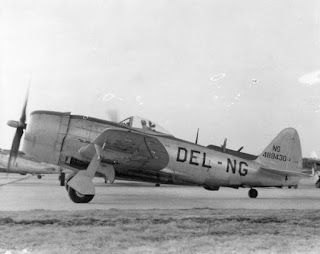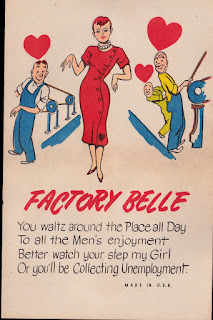There was a time that if someone in the family came down with an infectious disease the Public Heath department would place a cardboard sign on your house warning other people to stay away. It was much embarrassment to the family and if that family had a business (grocery store, restaurant etc) and their apartment was above the business it was an economic downfall.
This happen in our local area until the 1950s.
the signs shown are not from Delaware or Maryland but merely representative of the type of cards that were used.
above from 1934
above 1931
The Lehi Historical Society carried an interesting article on Diphtheria (the reason the Iditarod takes place) and it is reprinted below.
There
were many diseases that spread through towns and villages causing sickness and
death over the years. Diphtheria is one of them that we don't hear of much
anymore. (Diphtheria causes swelling of the mucous membranes, including in your
throat, that can obstruct breathing and swallowing. Sometimes a bacterial toxin
can enter the bloodstream and cause fatal heart and nerve damage.) In the 1920s 13,000 to 15,000 deaths occurred nearly every year in the
United States due to the disease. The first inactivated toxin, or toxoid,
against diphtheria was developed around 1921, but it was not widely used until
the 1930s. Before that time many so called remedies were used to try to prevent
and cure the disease.
In 1880 the disease was causing several deaths around
the State. Sarah Harris, at 16 years of age found herself suffering with the
disease in Salt Lake City, and it nearly took her life. This is her experience
of her unusual healing in her own words.
“After going to school for about two weeks, I took
very sick with the diphtheria which was an epidemic in the city at that time,
very few who took it recovered. Everything possible was done for my recovery,
Aunt Mary cared for me as she would her own child. A doctor came to care for me
every morning about 10:00 and sometimes in the evening.
There was a large lump which grew in my throat, it
looked like a toad stool and would almost choke me. I would swallow it would
move back and forth in my throat making a noise so loud your could hear it in
the other rooms of the house.
One morning when the doctor came he told Aunt Mary
there was an old lady going around town taking these lumps out of the throats of
the sick, and every one of them died shortly after. A few days after this
doctor came and brought another young doctor with him who was just learning to
practice. Aunt Mary could smell the liquor on the doctor and knew he had been
drinking, something he had never done before, so she stood right outside my
bedroom door and listened closely to everything they said.
The doctor took a pair of pinchers out of his satchel
and told the young doctor who was with him that if they could get that lump out
of my throat without breaking it, and dry it on glass it would mean thousands
of dollars to them in their earnings. He propped me up in bed with pillows and
told me to open my mouth as side as I could and keep it open.
During all this time Aunt Mary was just outside the
door watching all that went on and listening very closely to all that was said.
As the doctor with his pinchers in his hand was about to begin his operation
Aunt Mary very quietly slipped up behind him and quickly taking hold of his
wrist she twisted the pinchers out of his hand saying, 'No you don’t, I
remember that you told me about the old lady.' She took the pinchers in her
room and hid them. The doctor stood speechless but very gently he took the
pillows from my back and laid me back down in bed, then without a word they
left.
The next morning the doctor returned at the usual
time. By this time he was sober and cared for me in his usual way. He had a
little brush and a small bottle of medicine which he swabbed my throat a little
at a time.
When the doctor swabbed my throat he said it was a
deadly poison. After each swabbing of my throat he took the brush and bottle
and burned them. He warned me to be sure and not swallow anything that might
break off from the lump in my throat. A few days after this the doctor came in
the morning and again in the evening, before he left he told Aunt Mary he could
do no more for me. He said, 'She has gone beyond the help of man and tonight at
midnight the change will come.' He prepared and left a small glass of medicine
different to what I had been taking and told Aunt Mary to give me a spoonful
every hour during the night, but a fear came over her.
She was frightened of the medicine and felt impressed
it would harm me, so as soon as the doctor left she took it and threw it
outdoors. After she had done this she was inspired by the Spirit of the Lord
what to do for me and immediately carried out her inspiration.
She called her husband and son Ed to her and gave them
instructions. Ed went to the yard, caught a chicken and split it two with an
axe, then as quickly as he could holding the chicken together he ran to the
kitchen door where his father placed the chicken on a heavy piece of paper and
took it to Aunt Mary who waited it at my bedroom door.
She had made me ready by taking all the clothing off
from my chest, shoulders and back. She quickly took the chicken and while its
heart was still beating, she opened it up and placed it on my throat and chest.
I could feel its heart beating, and it made me so sick I thought I would never
stand it. I could feel myself getting fainter and fainter until I went
unconscious.
About three or four o’clock in the morning Aunt Mary
awoke me so that she could care for me before the doctor came. Before awakening
me she took the chicken off my chest and buried it. Ed dug the hole ready to
put it in but it had such an awful smell they could hardly stand to bury it. It
had turned as green as grass for it had drawn the terrible disease from my
body. She gave me a bath and put clean clothes on me, then she put clean linen
on my bed.
Instead of the doctor coming at the usual time, 10:00
in the morning, he came at 6:00 expecting to find me dead. He came in the door
and stood scratching his head dumbfounded repeating three times, 'This is a miracle,
I expected to come this morning and find her stretched out on boards.' He
turned to Aunt Mary and said, 'If you need me anymore you know where to find
me.' He said, 'Good morning.' and left.
From that time on I continued to get well, by spring I
was able to walk around, but if I happened to fall down which I did many times
I couldn’t get up unless I crawled to something and pulled myself up. For a
long time I had to eat and drink by myself for my throat was so badly eaten out
I had to hold my head back or the food and water would come back through my
nose.”
It took several years but Sarah recovered and lived to
the age of 92 and had over 150 children, grandchildren and great-grandchildren.



























